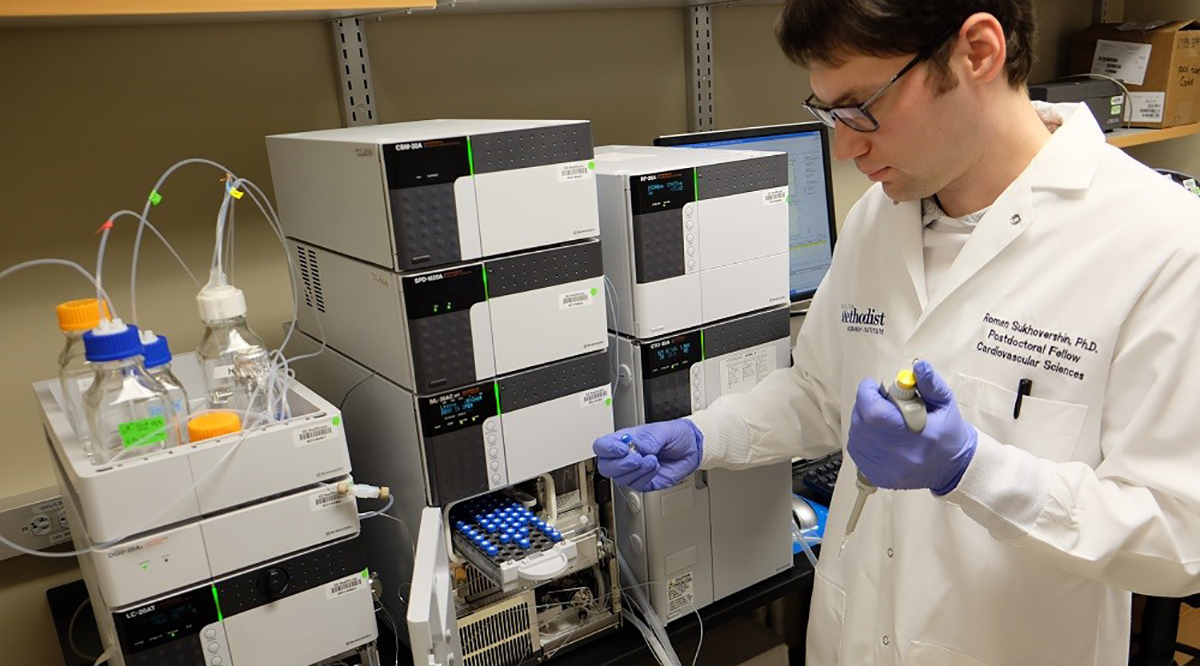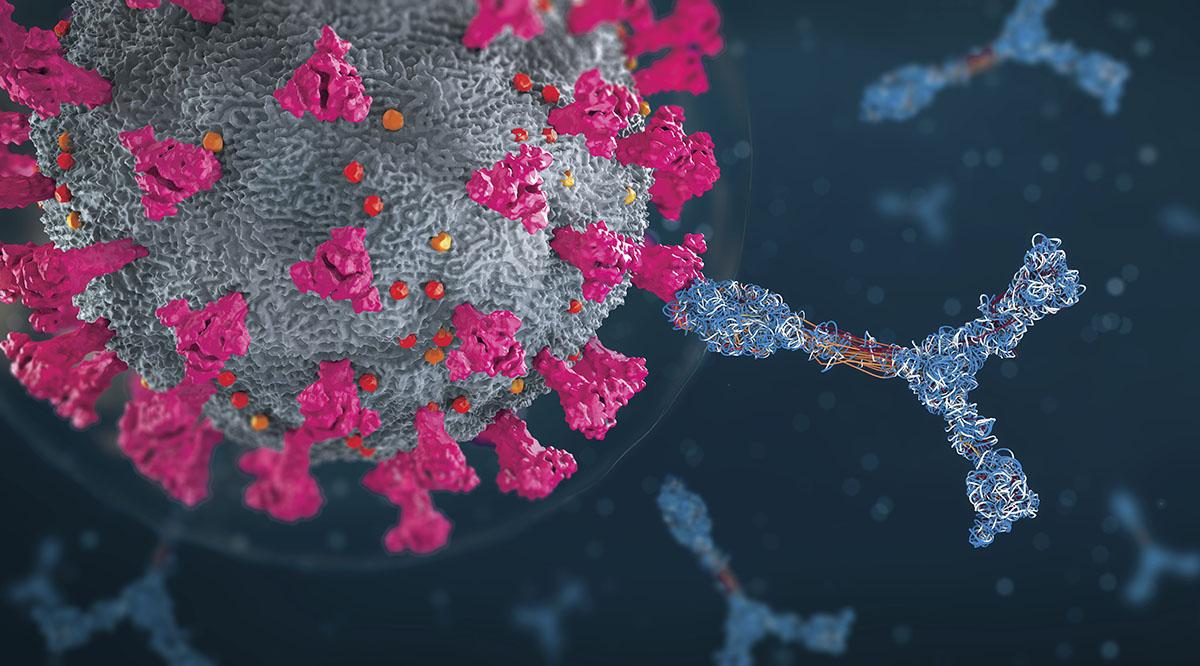For 200 years vaccines have been developed the same way since 1796 when a patient was injected with pus from the sores of a milkmaid to cure smallpox – until last year in 2020.
The theory behind the vaccines is that mRNA will tell a cell to make a protein that’s used by a certain virus, which would set off an immune response that builds the body’s ability to fend off the actual virus.
“It’s essentially biological software,” Cooke says.
The past 14 months have been uncertain, rapidly changing and especially in the field of medicine. The COVID-19 vaccines are the result of over a decade of research into mRNA vaccines. I think one of the most exciting future potentials of this same technology is the treatment of diseases like cancer.
This article is by Patrick Boyle, Senior Staff Writer from the AAMC
More than 80 million Americans have been vaccinated against SARS-CoV-2 — the virus that causes COVID-19 — using the game-changing possibilities of mRNA technology. And while some people worry that the technology has been “rushed,” for more than 25 years university labs have been exploring the use of RNA, rather than viruses, to build the body’s immunity against diseases.
“The vaccine field has been forever transformed and forever advanced because of COVID-19,” says Dan Barouch, MD, PhD, director of the Center for Virology and Vaccine Research at Harvard Medical School.
Messenger RNA (mRNA) — the basis of the first two vaccines cleared for public use by the Food and Drug Administration (FDA) — induces cells to set off an immune response against the coronavirus that causes COVID-19. Vaccine researchers believe the success of these inoculations will usher in the most radical change to vaccine development since Jenner tapped a cow virus two centuries ago.
“This is just the beginning,” says John Cooke, MD, PhD, medical director of the RNA Therapeutics Program at the Houston Methodist Research Institute.
Researchers say mRNA can be used to create a variety of vaccines and treatments in less time and at lower costs than traditional methods. The vaccines’ use against COVID-19 will produce more evidence about the effectiveness and safety of this approach.
Teaching an immune response
Although building medicines with mRNA is a new idea to the public — one reason for the widespread vaccine hesitancy in the United States and other countries — Cooke notes that “the science has been with us for a long time.”
mRNA emerged as an alternative to traditional vaccine development in the early 1990s, building on research involving RNA injections into mice at the Waisman Center at the University of Wisconsin-Madison. mRNA is a molecule that essentially delivers instructions to cells to build specific proteins. Proteins are key to the success of a viral infection, because they enable a virus to replicate after it attaches to a cell. The coronavirus, for example, attaches to a cell with a so-called “spike” protein, which triggers the viral replication that turns the infection into COVID-19.
The theory behind the vaccines is that mRNA will tell a cell to make a protein that’s used by a certain virus, which would set off an immune response that builds the body’s ability to fend off the actual virus.
“It’s essentially biological software,” Cooke says.
The theory showed promise in lab experiments and animal trials through the 1990s and early 2000s, with researchers aiming to create therapies to stop the spread of cancer and vaccines to protect against such viral diseases as influenza, Ebola, and SARS (severe acute respiratory syndrome).
“We knew from our very first experiment that it had the potential to be an incredible therapeutic,” says Drew Weissman, MD, PhD, who runs an RNA research lab at Perelman School of Medicine at the University of Pennsylvania (PSOM) in Philadelphia. Yet it was initially difficult to get government or corporate funding, he notes, because “pharmaceutical companies and researchers didn’t believe in it.”

Several stubborn drawbacks impeded the technology’s usefulness: It was difficult to get mRNA into a cell, and mRNA caused severe inflammation and was quickly degraded by the body. In what mRNA researchers consider a breakthrough, Weissman and fellow PSOM researcher Katalin Karikó, PhD, overcame those hurdles by using synthetic RNA that the body’s immune system doesn’t recognize and encasing that material in lipid nanoparticles (fat bubbles) that easily slip into cells.
By 2017, according to an analysis in Nature, human trials were underway to test mRNA vaccines against HIV, influenza, Zika, and rabies. Then came COVID-19.
At the right time
There’s no good time for a pandemic to arrive, but the emergence of COVID-19 in December 2019 proved ripe for mRNA research: With its primary scientific impediments resolved and human trials underway, the technology stood ready for a real-world test just as that world desperately needed a vaccine to be developed faster than ever. As labs around the globe launched hundreds of experiments and studies (the National Institutes of Health lists hundreds of COVID-19 vaccine studies), many people saw mRNA technology as among the most promising to meet the need-it-now challenge.
“The technology has a lot of advantages over traditional vaccine technologies,” says Florian Krammer, PhD, who runs a research lab at Icahn School of Medicine at Mount Sinai in New York. He cites the relative ease with which information about the genetic sequence of a virus can be inserted into the basic platform.
“It’s very easy to change the vaccine; you just have to change the sequence,” Krammer says. “This is an ideal platform to deal with a pandemic or outbreak.”
That concept is supported by the unprecedented speed at which the first two COVID-19 vaccines were created and administered to the public in the United States: mRNA vaccines from Pfizer and Moderna won emergency use authorization from the FDA in December 2020 — less than a year after Chinese scientists revealed the genetic sequence of the coronavirus.
But science alone can’t take all the credit: Social, financial, and political factors played a big role. The worldwide urgency to combat COVID-19 drove governments, foundations, and corporations to pour more money into vaccine research and development more quickly than ever, knowing that many — if not most — of the funded projects would produce no useable interventions but confident that some would succeed.
The guaranteed funding, Weissman says, “took away the risk” for universities and pharmaceutical companies to go full speed with experimental vaccines.
The sense of urgency also compelled research scientists to collaborate as never before. Chinese scientists laid the foundation for that collaboration by sharing the genomic sequence for the coronavirus in January 2020, soon after they mapped it — “with no strings attached,” notes Barouch at Harvard Medical. “If they hadn’t done that, it would have been a long time before any of us could have started on vaccine development.”
From that point on, scientists from different institutions and countries routinely shared their investigative findings with each other and the public — even before publishing those findings — through conference calls, email exchanges, and web postings. The information included proprietary data about the efficacy of their experimental work, even when that data did not show promise.
“The extent of cooperation has been unprecedented,” Barouch says.
The resulting creation and application of COVID-19 vaccines using cutting-edge technologies — including mRNA and a recently authorized Johnson & Johnson vaccine that uses harmless “viral vectors” to induce immunity — has implications beyond the current pandemic.
“Both of these platforms have now been proven that they can be used in a real-world setting to combat a [viral] threat,” Barouch says. “These are no longer academic questions. We will see a lot more mRNA and vector vaccines because of it.”
Future vaccines and treatments
Malaria. Tuberculosis. Hepatitis B. Cystic fibrosis. Those are just some of the diseases that researchers say could be the next focus of mRNA vaccines and treatments, aside from those already in human trials (HIV, rabies, and influenza). Scientists continue to explore mRNA treatments for several types of cancer. As explained by researchers at the University of Texas MD Anderson Cancer Center, mRNA instructs a patient’s cells to produce protein fragments based on a tumor’s genetic mutations, prompting the immune system to find other cells with the mutated proteins and attack the tumor cells that remain.
“mRNA vaccines can be used to target almost any pathogen,” Cooke says. “You put in the code for a particular protein that stimulates an immune response. … It’s essentially unlimited.”
Krammer suggests that mRNA vaccines can advance even faster than they did for COVID-19 — maybe in three to four months. That seems ambitious to some, but Barouch agrees that research and development timelines will shrink for most vaccines.
“I don’t think anyone is going to present a 10-year vaccine development plan in a company boardroom again,” Barouch says.
At the same time, the researchers urge caution around expectations.
First, scientific challenges remain, as each virus presents its own puzzles. For example, labs have not produced a marketed vaccine for HIV, through mRNA or other technologies, despite more than 30 years of efforts.
In addition, although confirmed side effects from the mRNA vaccines used against COVID-19 have been mild in all but a few cases so far, much remains to be learned. Winning more widespread public acceptance will require effective communication about those side effects — and about disinformation, such as that mRNA can change someone’s genetic makeup. (The Centers for Disease Control and Prevention explains that the mRNA from vaccines does not enter the cell nucleus and does not interact with a person’s DNA.)
Other challenges lie outside of science. Few diseases can spur the kind of global response that COVID-19 garnered: the funding, the commitment of top-of-the-field scientific resources, the collaboration, and the public will.
Researchers might collaborate more than they did before, Barouch says, but not as much as they did for COVID-19. “Will that degree of cooperation be there in the future? Of course not,” he says.
And while Krammer believes it’s “technically possible” to produce a vaccine in a little over three months, he says that can happen “only if the effort gets enough attention and funding.” That might happen for another deadly viral pandemic that goes global and threatens not only lives but also national economies, he says, but not for other diseases.
“I don’t think we’ll end up in a situation where every vaccine is going to be developed in a year,” he notes.
In fact, researchers worry that the COVID-19 vaccine breakthrough has set one year as the public’s new expectation to get a vaccine against an emerging virus. “I don’t think I would survive if I had to make a new vaccine in a year,” Weissman says.
Still, as one of the pioneers of mRNA vaccine technology, he feels gratified about the outcome and is driven to build on it: “It is just an incredible satisfaction that it has worked — and worked well. I’m already thinking about what we’re going to do next.”
Patrick Boyle, Senior Staff Writer. Original article

